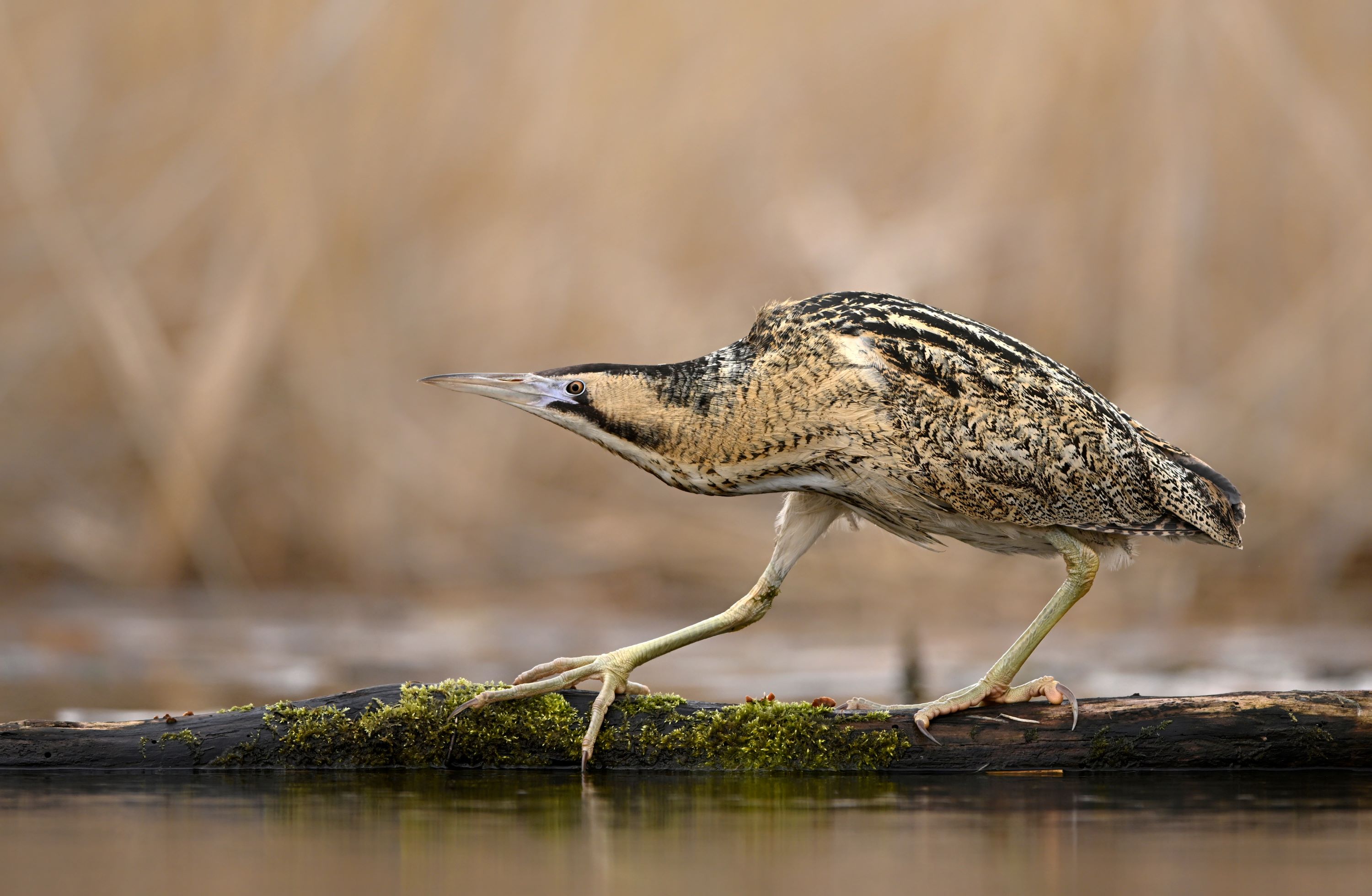
Eurasian Bittern: The Elusive Heron of the Old World
Introduction to the Eurasian Bittern
The Eurasian Bittern, Botaurus stellaris, is a cryptic and solitary bird, renowned for its excellent camouflage and the male's distinctive booming call. Part of the heron family, Ardeidae, this species inhabits the reed beds of Europe, Asia, and parts of North Africa, playing a vital role in the ecosystem of wetlands.
Physical Description
The Eurasian Bittern is a medium-sized heron, typically measuring about 70-80 cm in length with a wingspan of approximately 100-130 cm. It has a stocky body, a thick neck, and a robust, dagger-like bill. Its plumage is a mottled pattern of browns and buffs, providing excellent camouflage in its reedy habitat. In flight, it presents broad, rounded wings and a slow, deliberate wingbeat.
Habitat and Distribution
Eurasian Bitterns are found primarily in freshwater wetlands with dense stands of reeds. These habitats provide them with both the cover for nesting and hunting and access to their prey. Their range extends across Europe and Asia, with some populations wintering in the Mediterranean and North Africa.
Breeding and Nesting Habits
The Eurasian Bittern nests solitarily in large reed beds, making it difficult to observe. The nest is typically a platform of reeds and other aquatic plants, built just above the water level. This secluded nest placement helps protect the eggs and chicks from predators.
Egg Laying and Incubation
The female lays a clutch of 3-5 eggs. The eggs are incubated solely by the female for about 25-28 days. During this period, the male may establish and defend a territory encompassing several potential nesting sites.
Chick Rearing and Parental Care
The chicks are born altricial and are entirely dependent on the mother for food. The female feeds the chicks with regurgitated fish and amphibians. The young leave the nest after about 7-8 weeks but may stay close by, receiving food from the mother for some time.
Feeding Behavior
Eurasian Bitterns primarily feed on fish, amphibians, and invertebrates. They hunt by standing motionless or walking slowly, striking with their long bill to capture prey. This method of hunting, combined with their cryptic plumage, makes them successful ambush predators.
Vocalizations and Communication
One of the most notable characteristics of the Eurasian Bittern is the male's booming call, especially prominent during the breeding season. This deep, resonant sound, often likened to blowing across the top of a bottle, is used to establish territory and attract females.
Conservation Status
The Eurasian Bittern has faced significant habitat loss due to the drainage of wetlands and reed bed destruction, leading to a decline in its population. Conservation efforts have focused on habitat restoration and protection, which has led to a gradual increase in their numbers in some areas. The species is currently listed as Least Concern but remains a focus of conservation due to its habitat specificity and population fluctuations.
Similar Species and Taxonomy
The Eurasian Bittern belongs to the order Pelecaniformes and the family Ardeidae, which encompasses herons, egrets, and other bitterns. It is closely related to the American Bittern (Botaurus lentiginosus) and other bittern species within the genus Botaurus. While these species share habitat preferences and behaviors, the Eurasian Bittern is distinguished by its unique call and specific plumage pattern.
The Eurasian Bittern in Utah
The Eurasian Bittern is not found in Utah or elsewhere in North America, being native to the Old World. However, birdwatchers in Utah can observe similar marshland birds, such as the American Bittern, in local wetlands.
Conclusion
The Eurasian Bittern, Botaurus stellaris, remains an enigmatic and fascinating bird of the Old World's wetlands. Its secretive behavior, unique vocalizations, and specialized habitat preferences make it an intriguing subject for birdwatchers and conservationists alike. The protection of wetland habitats not only benefits the Eurasian Bittern but also supports a rich biodiversity, highlighting the importance of these ecosystems for a variety of species.